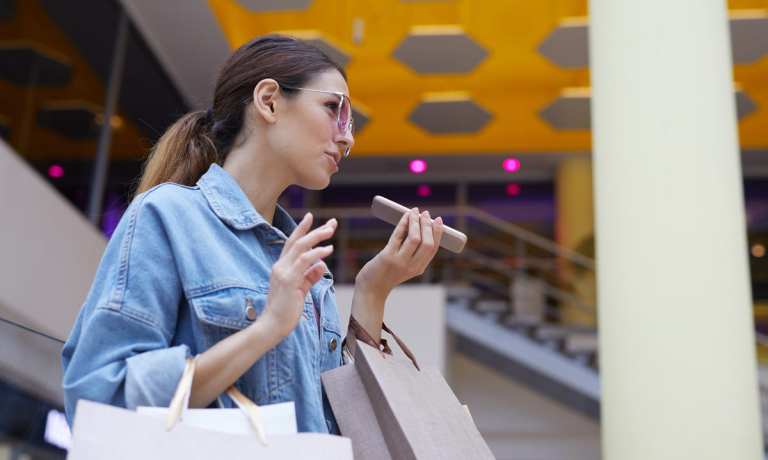Voice Commerce Takes Over the Restaurant Industry with Oracle, Uber

From Oracle to Uber, major technology companies are extending voice ordering’s reach in the restaurant industry.
On Thursday (May 4), voice artificial intelligence (AI) company SoundHound announced a partnership with cloud technology giant Oracle to bring the former’s restaurant ordering technology to the latter’s MICROS Simphony Point-of-Sale (POS) for Restaurants. The integration enables consumers to dictate their orders at the drive-thru, over the phone or at in-restaurant self-service kiosks, speaking as they would to another person.
“Restaurants are looking to voice technology to help drive sales, support employees, and create a great customer experience. SoundHound’s advanced voice AI allows them to do just that with minimal onboarding and at a reasonable cost,” James Hom, chief product officer and co-founder of SoundHound, said in a statement. “We’re delighted that Smart Ordering is now available in the Oracle Cloud Marketplace, where our technology can be accessed by thousands of restaurants looking for smart ways to do more with less.”
Also Thursday, Uber Eats debuted an integration with Amazon’s Alexa to enable consumers to track their orders through their Amazon Echo devices, receiving status updates either automatically or via voice request.
“We know that consumers are busier than ever before and we are excited to launch our integration with Alexa that unlocks new ways to simplify the experience to help consumers to get anything, from anywhere—which is always our priority,” Ethan Hollinshead, Lead Product Manager at Uber, said in a statement.
Overall, voice commerce is on the rise. Research from the latest edition of PYMNTS’ ConnectedEconomy™ series, “ConnectedEconomy™ Monthly Report: The Evolving Digital Daily Edition,” which draws from a February survey of more than 4,000 U.S. consumers, finds that 86 million consumers now use voice assistants each month. Overall, compared to February 2022, 21 million more consumers participated in activities involving some type of smart home device in February 2023, a 31% increase.
Noting this rise, restaurants and aggregators alike are stepping up their voice ordering capabilities. Last month, for instance, fast-casual giant Panera Bread announced its own partnership with Amazon Alexa through which it allows loyalty members to order through their Echo Show devices. In the news release, Amazon implied that there would be more restaurants to come now that the technology is in place.
“Panera is the first to use our updated Alexa Food Skills API which incorporates state-of the-art techniques in conversational AI to make the ordering process through Alexa more intuitive,” Mark Yoshitake, general manager and director of Alexa Skills, said in a statement. “Now, customers can reorder their favorite meal, ask to add avocado and bacon to their sandwich, or track their delivery without having to pick up their phone, or open an app.”
Plus, the ability for brands to respond with voice AI is improving as well.
“There’s been an evolution in the human quality of the voice, which is rapidly improving,” Presto interim CEO Krishna Gupta told PYMNTS’ Karen Webster in an interview. “As somebody who also runs a venture capital firm, I’m aware of all the new companies coming out that are trying to clone the humanness of the voice.”
Overall, many consumers are engaging with restaurants digitally. The same ConnectedEconomy™ study revealed an 11% year-over-year increase in consumers ordering via restaurant apps, websites and aggregators, with 146 million consumers across the country now ordering digitally.